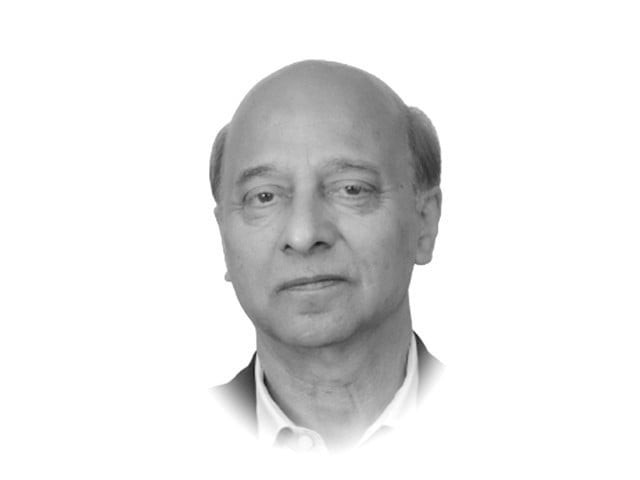After DeepSeek, China's JC10 moment
.

Amidst the intricate tapestry of Chinese intellectual and academic circles, a distinct sense of pride permeates the nation's achievements. The recent, albeit perilous, Indo-Pak confrontation (May 7-10) serves as a catalyst for this sentiment. As the ongoing war of information and propaganda intensifies, Chinese intellectuals eagerly celebrate the groundbreaking milestones achieved through their technological advancements, particularly in the domains of AI-driven satellites, jet fighters and missiles, in collaboration with the Pakistan Air Force. They find amusement in the spotlight that has been bestowed upon their defence hardware, which emerged triumphant after four days of engagement.
Following the DeepSeek, Beijing and Shanghai have experienced a collective sense of triumph akin to the JC10-PL15 Moment for most academics. This moment is fueled by the successful demonstration of their technology, which has garnered widespread attention.
An excerpt from The National Interest elucidates the recriminations between the Indian and French governments over access to source codes for the Rafale jets. These events have engendered both anger in India and amusement in Beijing.
Chinese social media platforms have been abuzz with these developments, as they find amusement in the circumstances. After all, why should they not? Chinese weapons and warplanes exceeded expectations during the conflict. When news emerged of India's inability to access Dassault's source code, coinciding with India's capture of an intact Chinese PL-15 missile, one of Beijing's "wolf warrior", diplomats took to X to mock New Delhi: "India invested $288 million per Rafale, yet they lack access to the source code. Furthermore, they assert their ability to 'extract the software' from the wreckage of a PL-15 missile. However, they are unable to access the fundamental functions of their own Rafale jets."
While exuberance is understandable, it should not be construed as complacency. The Indo-Pak confrontation has only served as a catalyst for further pursuit of excellence through meticulous deliberation and strategic planning, both domestically and internationally.
Discussions at universities, think tanks and official quarters continue to be influenced by the recent four-day conflict between nuclear rivals, India and Pakistan. The episode appears to have energised Chinese academia to engage in forward planning and explore options for enhanced and more effective cooperation with partner countries, particularly Pakistan.
Why is this the case? Consistency is ensured by the Communist Party, which underpins China's entire political economy and the intellectual growth led by a dedicated leadership that ascends the political ladder through a rigorous accountability process. Only those with the utmost integrity and demonstrated commitment to the party and the people are successful in this process.
What unites these individuals is an unwavering faith in the well-being of citizens and the belief that investment in human resources is essential for progress.
Whether it is the iconic Great Wall in Beijing or Shanghai, Yiwu or Guangzhou, China's defence hi-tech capabilities, dozens of high-altitude glass bridges, or Shanghai's Global Finance Center, they all convey the same message: unwavering policy consistency, honesty and visionary leadership, coupled with absolute focus on the welfare and education of the people. These factors have transformed China and propelled it to a position where it is now asserting itself even against the United States. While President Trump's bullying tactics were met with resistance, China agreed to engage in diplomatic discussions but refused to yield.
The recent grand summit in Kuala Lumpur, which involved China, ASEAN and the GCC, provided a glimpse of Beijing's unwavering commitment to peaceful engagement and win-win cooperation rather than coercive diplomacy. While President Biden's Build Back Better World initiative has seemingly lost momentum, the Belt and Road Initiative (BRI) continues to thrive and attract an increasing number of countries.
Since Xi Jinping assumed the presidency in 2012, China has invested hundreds of millions of dollars in research and capacity building. Notably, the Chinese military has undergone a significant reduction in personnel, with nearly 300,000 personnel being eliminated. Additionally, the generals have been instructed to prioritise their professional duties and future challenges rather than engaging in commercial ventures. The People's Liberation Army (PLA) must maintain its focus on excellence and avoid any involvement in commercial activities. Both the PLA and the Communist Party have endured severe purges of high-ranking officials for corruption, inefficiency and betrayal of their responsibilities.
The driving force behind China's current success lies in an ecosystem anchored in solid planning, facilitated knowledge and skill development, and the pursuit of excellence. This system operates on merit and celebrates knowledge and skills.
Coincidentally, as I was concluding this article, a public service text message arrived on my mobile device, reminding us that May 30th is the 9th National Science and Technology Workers' Day and coincides with the 25th National Science and Technology Activity Week.
"We extend our utmost respect to all science and technology workers. Let us harness innovation as our guiding principle and hard work as our propulsion, collectively constructing the vision of a robust nation through science and technology," said the message from the ministry.
This inspiring message serves as a testament to the recognition of science and technology as the indispensable key to self-sufficiency and competitiveness, positioning China at a significant advantage over other nations.
It is unsurprising that China is experiencing a surge of technological achievements that few countries can boast of - something that instills a sense of confidence and fosters national pride.
















COMMENTS
Comments are moderated and generally will be posted if they are on-topic and not abusive.
For more information, please see our Comments FAQ